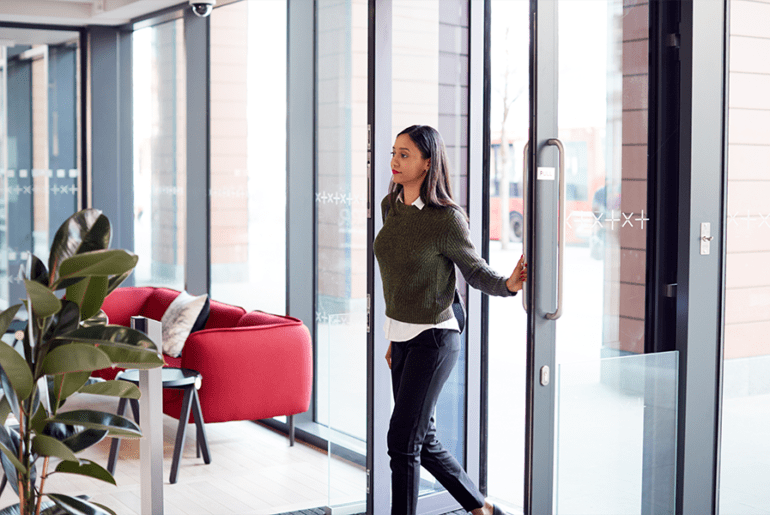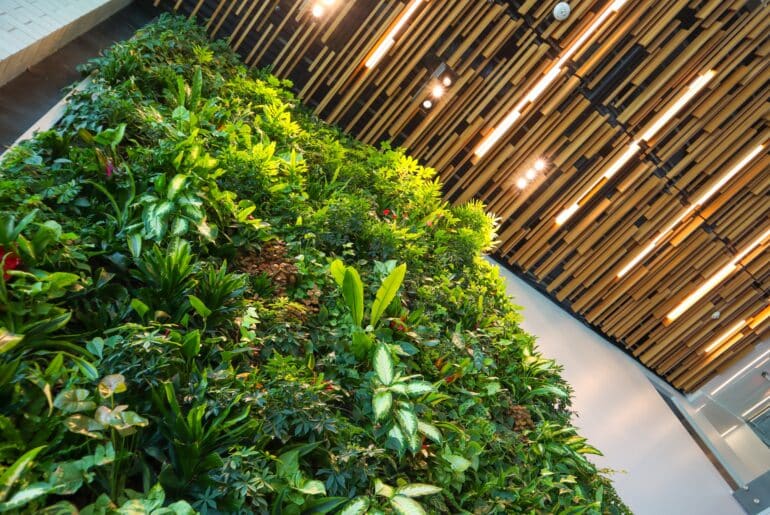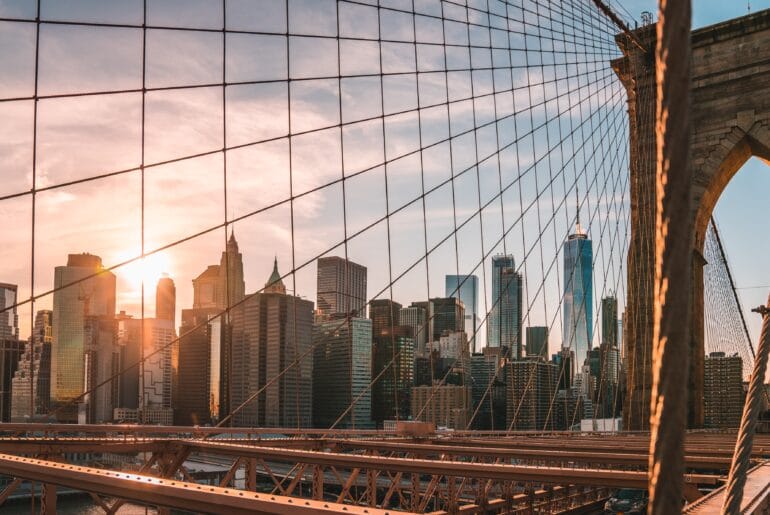In the face of the COVID-19 pandemic, companies across the spectrum are realizing that having a workplace that supports employee health and well-being is not a “nice to have” or added benefit, but a requirement.
Buildings have always played a role in occupant health, and when done right can enhance it. As we prepare for the great return to work, here are key considerations gleaned from our own research, industry insights, and client experience for organizations to make across 3 practical, prioritized domains: procedural, space design, and HVAC operations.
Not to ignore the ‘novel’ in ‘novel coronavirus’, this checklist is based on what we know now about the pandemic and may require changes as new scientific findings and official guidance come to light. It is also not meant to be a comprehensive plan for a specific company to follow, and instead highlights simple strategies that all companies should evaluate when determining their back-to-work plan.
If you need help creating your company’s specific plan to get back to work, please get in touch. Stok is part of the Workwell Coalition, a group of AEC leaders offering a robust array of services to support companies’ efforts and providing expertise to help you understand the legal implications of your plan all the way to how it will impact the environment.
PRODECURAL
Procedural updates come first on the list of priorities. If you make updates to space design or HVAC but don’t make necessary changes to workplace procedure, it can negate your other efforts. Consider the following procedural changes to minimize contamination spread at work:
#1: Start With a Survey
Controlling the number of people in your space is critical to socially distanced workplace safety. Gauge your employees’ interest in returning to the office with a survey asking if they want to come back to the office, and if so, when. Based on the responses, create two or more groups (A/B groups) who will be assigned days (A/B days) that they can come into the office on. We found in our own survey that only a handful of Stok team members are ready to get back to the office immediately, which helps with the rest of our phased planning. Make sure to send out the survey on a regular cadence as employee opinions are quickly changing.
#2: Assign Desks
This will ensure that no one sits close to anyone else on any given day. Use the survey results to guide these assignments. For our office, we have enough space and few enough employees interested in returning to work immediately that we will be able to designate entire areas of the office for each employee to sit. That will likely not always be the case in our office and may not be the case now in yours but continue to lean on survey data to drive space design decisions. Also assign a few hoteling desks, if you have space, so people can occasionally come in to work on a more flexible basis.
#3: Check Temperatures & Attendance
To monitor COVID-19 symptoms, have all employees get their temperature taken before they enter the building. This is typically done at the building entry, which is also where you should track attendance. For some jurisdictions, including San Francisco, taking temperatures is mandatory for all back-to-work plans. Contact tracing is also key to preventing an outbreak at your company in the event of a confirmed COVID-19 case. Use an iPad, QR scanner, or similar technology to track who’s been in and out of your workplace at any given time and leverage this information to trace any people that could have come in contact with a COVID-19 positive employee.
#4: Heighten Cleaning Protocols
You should fully clean and sanitize your workspace at least once a day and larger offices can consider hiring permanent porters to clean multiple times a day. Introducing simple handwashing signs also provides an important reminder to employees, as handwashing has remained one of the most effective methods for limiting viral spread. Also make sure to focus effort on cleaning areas of potential cross-contamination between employees. Bathrooms and kitchen/break room areas are of specific concern and should be cleaned often throughout the day.
#5: Remove Personal Items
While it’s hard to part with photos, organizers, and your favorite plant, desks should be fully cleared of personal items so that they’re easier to clean and don’t collect additional airborne particles. Even with assigned seating, this is critical for thorough cleaning protocols to be met.
#6: Limit Shared Food Spaces
In-office micro-kitchens and cafes should either be completely closed or offer limited choices, like hot prepared meals and prepackaged grab and go meals only (sorry, that means no salad bars!). These are hot areas of potential cross contamination between employees.
#7: Minimize Meetings
Even when chairs are spaced out, sitting with others in a conference room with limited ventilation isn’t a safe workplace practice under current conditions. Make your meetings shorter, less frequent, and with fewer attendees to limit close contact.
#8: Require Masks
As new research emerges around how the virus is spread, it’s best to require masks, especially when moving around the workplace. This can be tricky on a call at your desk, so we recommend using conference rooms and phone booths for calls and sanitizing them after or taking the call outside if you’re able.
SPACE DESIGN
To supplement procedural changes, you’ll need to see how your office can adapt to greater space needs. Of note, even if very few people will be in your office anytime soon, design your space for the future so you don’t have to constantly change it as you introduce more and more people back into the office.
#1: Put the ‘Space’ in ‘Workspace’
As we’ve all heard by now, 6 feet apart is the recommended distance for safe person-person interaction. However, that’s guidance for casual contact. Constant contact, such as sitting near someone at a desk for a full workday, may require more space for safety. So rather than measuring down to the 72nd inch, maximize space design to separate desks and even separate people on floors if possible. Giving yourself more than 6 feet between desks is a safer approach to constant contact for the time being.
#2: Limit Interactions via Paths of Travel
If your office is large enough to designate walking paths, design a path of travel to separate occupant interactions as people move around the workplace. You can think of it like sides of a road, where people walk along the perimeter of the office in one direction and along the interior corridor in the other. This strategy is adapted from healthcare, as hospitals have designated walking paths to limit the spread of potential contamination.
#3: Consider Partitions
We’ve heard a lot of discussion around sneeze guards and the return of cubicles to stop the spread of contamination with a physical barrier, but materials need to be part of the conversation. Certain materials not only block, but catch germs, so if the surface is not easily disinfected it could end up doing more harm than good. When considering partitions, don’t forget to consider what they’re made of.
HVAC OPERATIONS
Procedural and space design updates currently appear to be the most effective in slowing the spread of the virus in a workplace setting, but your building’s HVAC system also plays a role in creating a safe and healthy indoor environment. Consider making the prioritized changes below and refer to ASHRAE’s extensive COVID-19 HVAC guidance for in-depth information on building operations:
#1: Maximize Natural Ventilation
If you have operable windows, put them to good use! Keep windows open and add fans to them to increase ventilation inside.
#2: Maximize Outside Air Ventilation
In addition to natural ventilation, adjust your minimum outside air (OSA) setpoint to be as high as the system capacity allows. Diluting air particles inside your workplace with uncontaminated sources is the most important role your HVAC system can play for mitigating virus spread.
#3: Increase Filtration
If possible, increase your filters to a minimum size of MERV 13 and install them in return air pathways. The return airstream is where COVID-19 will be transmitted through, and often HVAC systems have limited or no filtration in that airstream (filters are usually only installed at the outside air intake for larger commercial HVAC systems). Higher MERV rated filters trap particles at higher efficiencies and lower sizes. Installing high level MERV filters increases the likelihood that air droplets containing the tiny COVID-19 virus will be captured before they are spread throughout the HVAC system.
#4: Consider Using UVGI
If none of the above are possible, consider using Ultraviolet Germicidal Irradiation (UVGI) to disinfect aerosols of the virus. This strategy is more costly and not necessarily as effective as ventilation and filtration, but worth considering if other options are not possible or sufficient.
LOOKING LONG TERM
While we can analyze the current and near-future impacts of COVID-19 on commercial real estate, the long term outlook remains fuzzy for most sectors. What is clear is that this pandemic will leave lasting impacts on the way (and where) we work. As we ease back into the workplace, strategies that are found to be beneficial to productivity and the bottom line will likely remain while others dwindle in the post-pandemic world. Whatever the future holds, we are here to help you work through the uncertainty.



